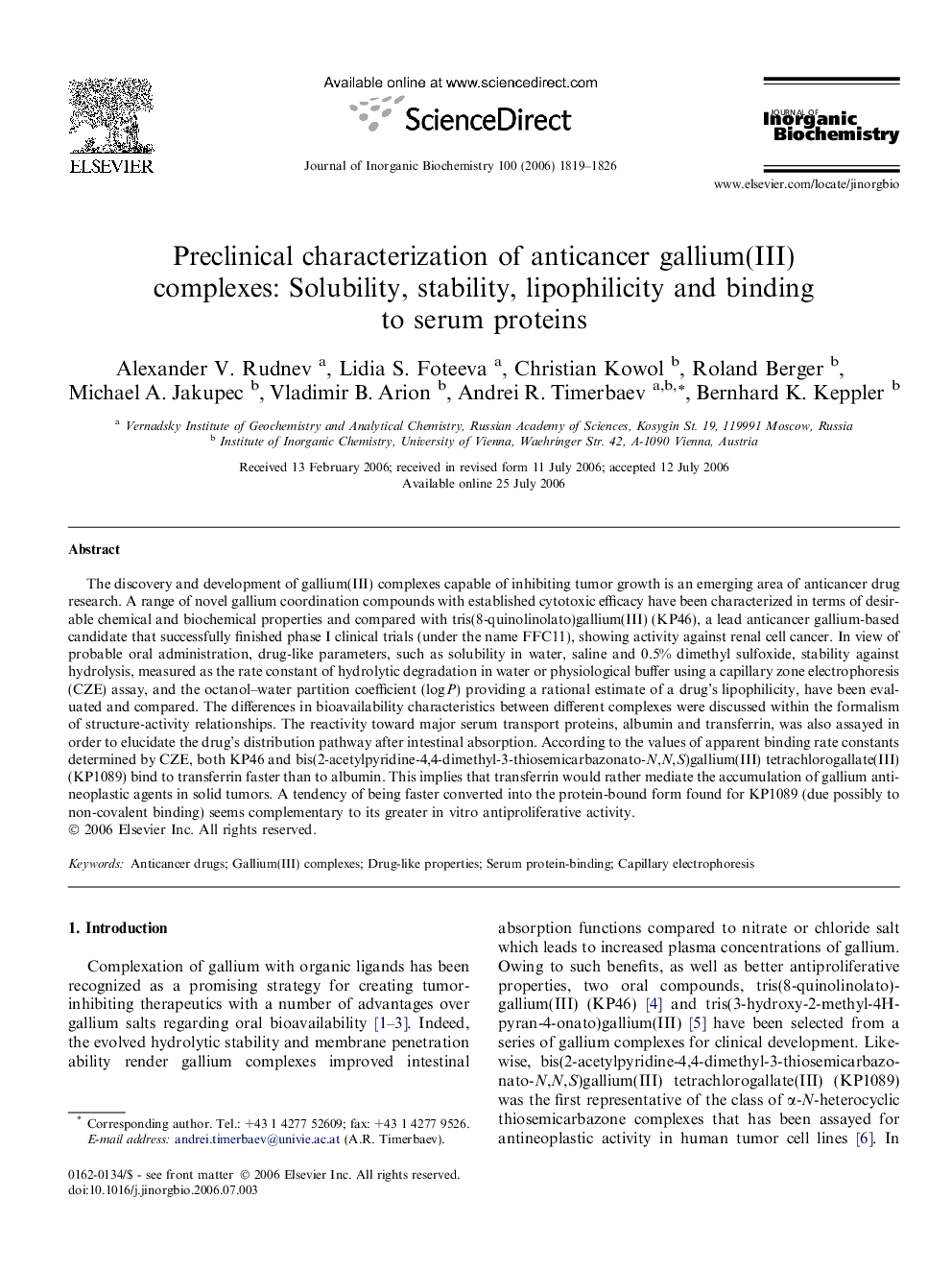| Article ID | Journal | Published Year | Pages | File Type |
|---|---|---|---|---|
| 10574214 | Journal of Inorganic Biochemistry | 2006 | 8 Pages |
Abstract
The discovery and development of gallium(III) complexes capable of inhibiting tumor growth is an emerging area of anticancer drug research. A range of novel gallium coordination compounds with established cytotoxic efficacy have been characterized in terms of desirable chemical and biochemical properties and compared with tris(8-quinolinolato)gallium(III) (KP46), a lead anticancer gallium-based candidate that successfully finished phase I clinical trials (under the name FFC11), showing activity against renal cell cancer. In view of probable oral administration, drug-like parameters, such as solubility in water, saline and 0.5% dimethyl sulfoxide, stability against hydrolysis, measured as the rate constant of hydrolytic degradation in water or physiological buffer using a capillary zone electrophoresis (CZE) assay, and the octanol-water partition coefficient (log P) providing a rational estimate of a drug's lipophilicity, have been evaluated and compared. The differences in bioavailability characteristics between different complexes were discussed within the formalism of structure-activity relationships. The reactivity toward major serum transport proteins, albumin and transferrin, was also assayed in order to elucidate the drug's distribution pathway after intestinal absorption. According to the values of apparent binding rate constants determined by CZE, both KP46 and bis(2-acetylpyridine-4,4-dimethyl-3-thiosemicarbazonato-N,N,S)gallium(III) tetrachlorogallate(III) (KP1089) bind to transferrin faster than to albumin. This implies that transferrin would rather mediate the accumulation of gallium antineoplastic agents in solid tumors. A tendency of being faster converted into the protein-bound form found for KP1089 (due possibly to non-covalent binding) seems complementary to its greater in vitro antiproliferative activity.
Related Topics
Physical Sciences and Engineering
Chemistry
Inorganic Chemistry
Authors
Alexander V. Rudnev, Lidia S. Foteeva, Christian Kowol, Roland Berger, Michael A. Jakupec, Vladimir B. Arion, Andrei R. Timerbaev, Bernhard K. Keppler,
